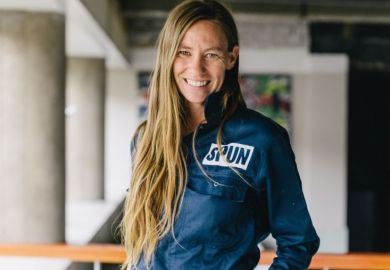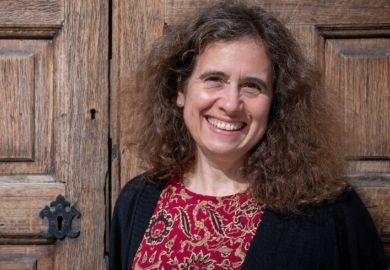This is a heart-warming, instructive and very readable book by a Jewish paediatrician at the Harvard Medical School in Boston who saved the life of Dayem, a small Iranian Arab boy afflicted with a deadly inherited anaemia. In the course of 26 years' treatment David Nathan transformed the boy from a dwarfed, grotesquely hideous cripple to a good-looking, active, independent businessman and bon vivant.
Skilfully woven into this story are the spectacular developments in molecular biology that have led Nathan to an exact understanding of the genetic lesions responsible for the boy's anaemia, the ethical dilemmas raised by the treatment of incurable diseases, the iniquities of the American health care system and the author's own development from a young intern to an experienced physician.
Dayem suffers from thalassaemia, a disease due to defective synthesis of haemoglobin, the protein of the red blood cells that transports oxygen from the lungs to the tissues and helps the return transport of carbon dioxide from the tissues back to the lungs. His red cells contained too little haemoglobin, and even that little haemoglobin was liable to precipitate and lead to the cells' premature destruction. As a result, his body was chronically short of oxygen. Red cells have a lifetime of about 120 days and are continuously replaced by fresh ones growing in the bone marrow. In response to his shortage of oxygen, Dayem's bone marrow produced red blood cells at the double and expanded at the expense of the bony mass surrounding it. When Dayem, aged six, arrived at Nathan's clinic, he had the stature of a two year old and had already suffered multiple fractures of his fragile bones. His haemoglobin level was little more than one tenth of normal, which is viewed as below the minimum needed to sustain life, his pulse was racing and he was out of breath, yet Dayem walked in vigorously and confidently, accompanied by his parents and two healthy younger brothers, and kept everyone around him laughing.
They had come from Lisbon where Dayem's father had his business; before that they had consulted Europe's leading specialist in Zurich who had told Dayem's parents that he could be kept alive by regular blood transfusions, but that the iron overload caused by them would poison his liver and kidneys and would eventually kill him. There was a faint hope that his body would respond to the shortage of adult haemoglobin by making another haemoglobin that is normally present only in the foetus, and this foetal haemoglobin might keep Dayem alive without transfusions. This was the option Dayem's parents had adopted before they took him to Nathan. It had kept him alive, but only just.
Nathan set himself the double task of rescuing Dayem from certain death and of relieving his parents of their feelings of guilt for having inflicted this terrible disease on their child. He persuaded them that Dayem must have regular blood transfusions if he was to grow and have no more fractures, and told them of his hope that research would find a way of dealing with the iron overload. To assuage their guilt, he told them how the genetic lesions responsible for thalassaemia have accumulated among Arabs and other peoples living in malarial zones of the world.
Thalassaemia is a recessively inherited disease; carriers with one defective haemoglobin gene are healthy. When two carriers marry, one quarter of their children are liable to become anaemic because they have inherited defective haemoglobin genes from both parents. For reasons that are still not fully understood, babies who have inherited one defective haemoglobin gene are less likely to die from malaria than babies with normal haemoglobin genes. Their greater chances of survival more than compensates for the early deaths of children with two defective haemoglobin genes. Natural selection has therefore led to an accumulation of the thalassaemia gene where malaria is common. In former times, when there was no blood transfusion and malaria was rampant in the Middle East, the couple's possession of defective haemoglobin genes would have given them more healthy children than if their haemoglobin genes had been normal. Therefore, they need not have felt guilty about Dayem.
In 1968, when Dayem arrived in Boston, bone marrow transplants from a compatible donor offered a chance of curing thalassaemia, but at a great risk. The risk of death has now shrunk from 50 to 25 per cent, but it still presents parents with an agonising dilemma. The author writes: "In pediatrics a decision to accept or reject a particular therapy is made by parents on behalf of a beloved child. If that decision has a bad outcome, the parents will be completely devastated by guilt. For that reason, the physician must make the parents believe that the decision, once made, is the one that he or she completely endorses. He must lift the burden of responsibility from the shoulders of the parents and place it where it belongs, on his or her own back. But all this must be done without taking the choice away from the parents in the first place."
For Dayem this dilemma did not arise because the marrow of his brothers was incompatible with his own; at first he did well on the transfusion regime, but after a few years 'flu brought a crisis that could be overcome only by removing his grossly enlarged spleen. Even so, Dayem developed symptoms of severe iron overload that Nathan decided to correct with a then new drug, Desferal, which, when injected, binds iron and eliminates it through the kidneys. Daily injections of Desferal from the age of 12 cured Dayem's symptoms, but they were painful and he hated them. As a teenager removed from his mother's control, he revolted, first about his repulsive face, which plastic surgeons were able to correct, but as soon as his new face made him acceptable to girls, he abandoned himself to a carefree life, ignored all warnings and forgot about Desferal until he was twice brought back to the children's hospital with heart failure and told that a third incidence was bound to be fatal.
Dayem's carelessness threw Nathan into rages of frustration, but to no avail. As Dayem told him years later: "It was really cramping my styleII couldn't swim when others wanted to swim. I couldn't do this when the others wanted to do that. It was annoying. It was painful. It itchedIso I thought whether I skipped a year or two wasn't going to make much difference in the long run. So I told myself everything was fineIon top of all that, I was being told that I was going to die anyway ... at one point, even though you thought that I had suicidal tendencies, and you even wanted me to see a psychologist, I stopped seeing him becauseII told him whatever I thought he wanted to hear, and he wasn't doing anything for meI though he was a very nice man." Meditation finally made Dayem start a new life, got him over the shame of being different, and of having been written off by his successful businessman father. He realises that the disease has saved him from having to live somewhere around the Persian Gulf and following in his father's footsteps and has enabled him to live the independent life he wanted to live. He says that meditation saved him and transformed his health. Nathan believes that meditation improved his health by reducing his anxiety as well as making him comply with his prescribed medications.
When Nathan was a young physician, one of his teachers told him that the greatest joy of paediatrics was to watch sick children shake off the fetters of chronic illness and become productive adults. On the other hand, Nathan is often asked whether it is right to go to the limits of technology in an attempt to save the life of a chronically sick child when the same health dollars, $30,000 a year for a thalassaemic patient, could be spent on vaccinations that would save thousands of lives. Nathan refutes that argument. As a physician, he regards himself as the servant and advocate of individual children. If this view flies in the face of official cost control and resource utilisation, he cannot help it. For him, the child's needs come first.
This book shows medicine at its best. Its author seems to combine compassion, humour, and understanding with an iron determination to keep his patient alive and well in the face of almost insuperable medical and temperamental obstacles. At the same time, Nathan tried to probe ever more deeply into the molecular lesions responsible for the disease, always hoping that the next results of his research will lead to a cure. So far, disappointingly, they have failed to do so, but hope is not lost. I found the book a pleasure to read and now think of its author as an old friend.
Max Perutz, OM and Nobel laureate, is a member of the scientific staff, MRC Laboratory of Molecular Biology.
Genes, Blood and Courage: A Boy Called Immortal Sword
Author - David G. Nathan
ISBN - 0 674 34473 1
Publisher - Harvard University Press
Price - £15.95
Pages - 288
Register to continue
Why register?
- Registration is free and only takes a moment
- Once registered, you can read 3 articles a month
- Sign up for our newsletter
Subscribe
Or subscribe for unlimited access to:
- Unlimited access to news, views, insights & reviews
- Digital editions
- Digital access to THE’s university and college rankings analysis
Already registered or a current subscriber? Login



